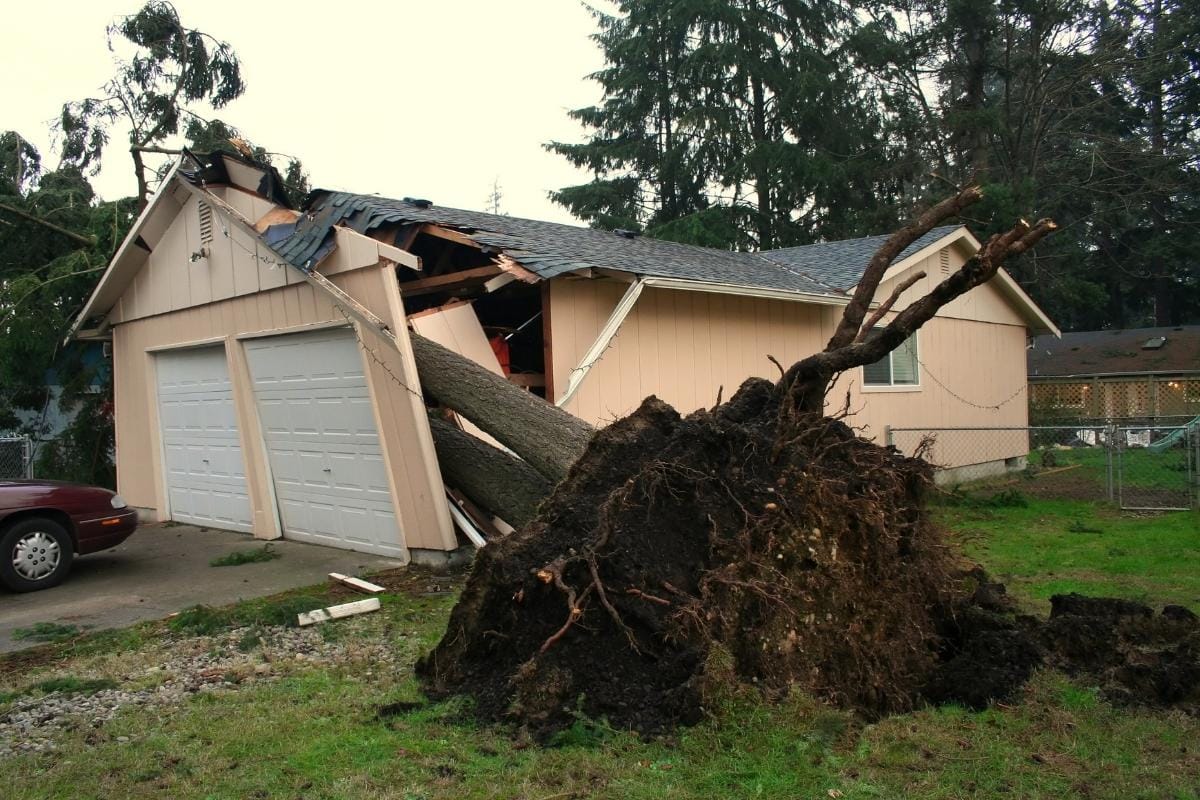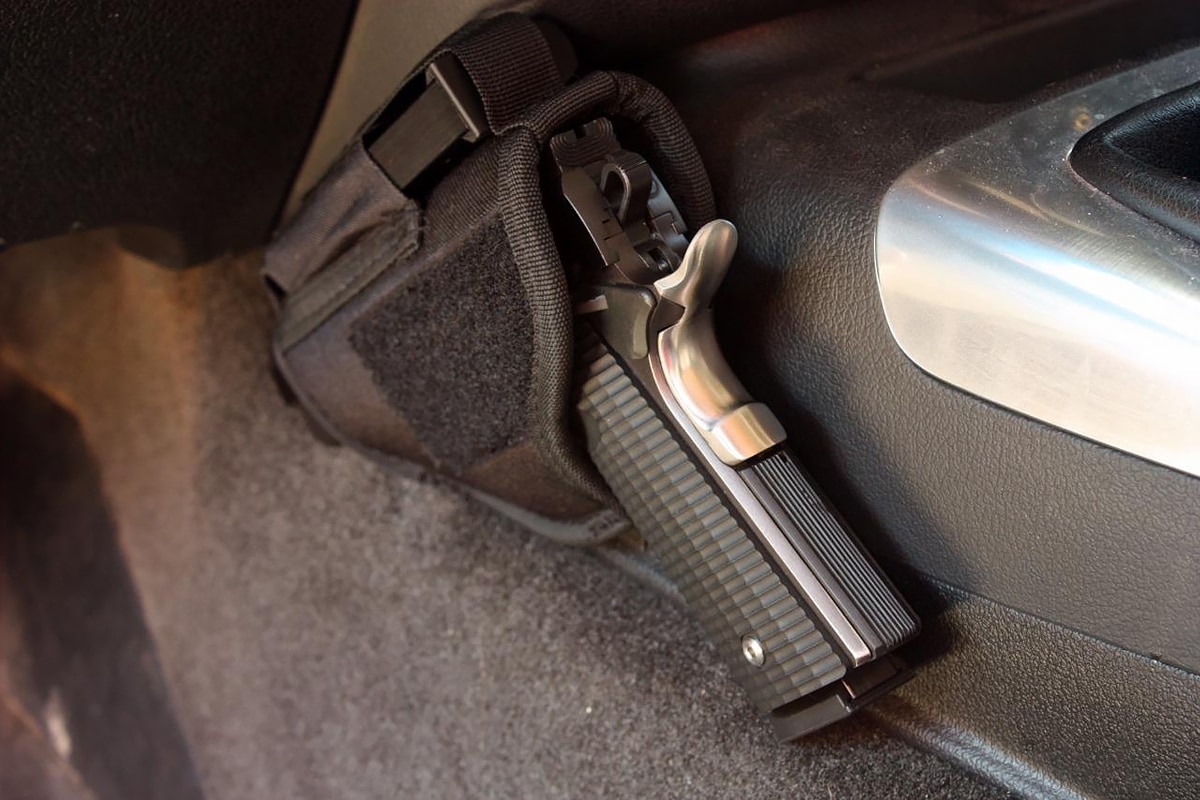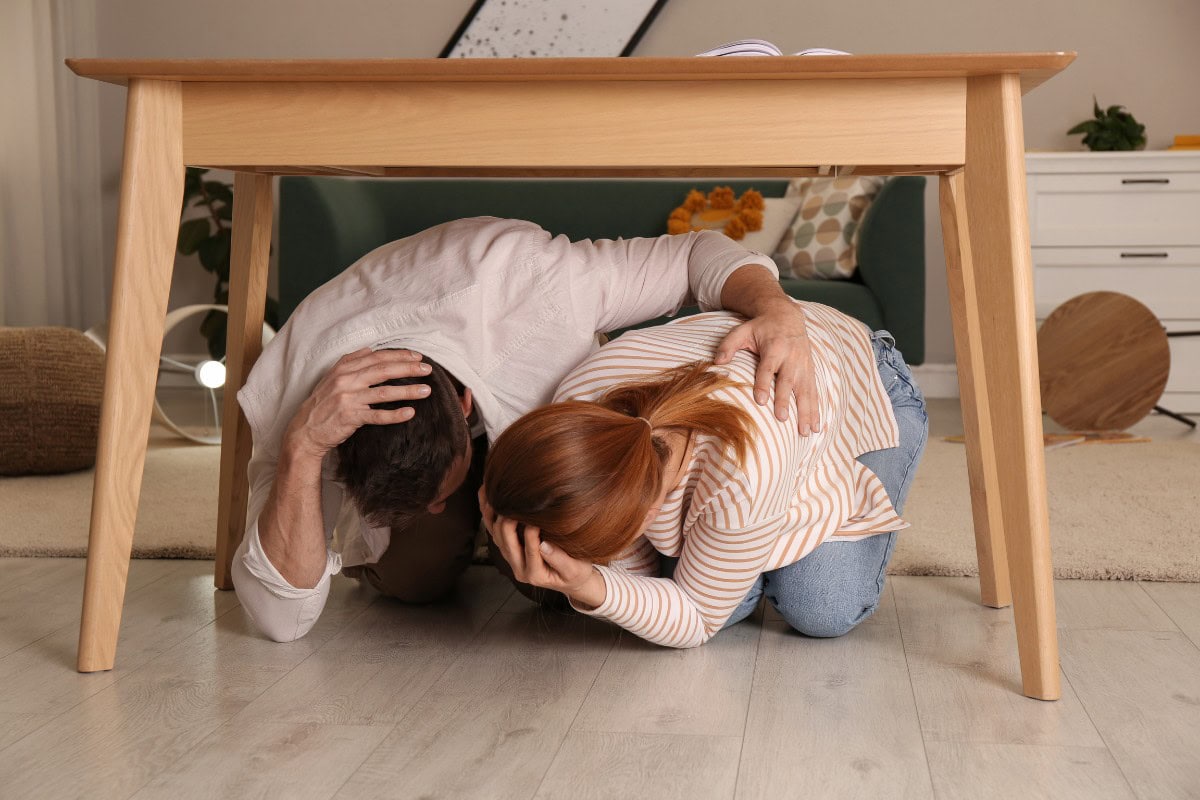Every year, thousands of people are impacted by natural disasters and severe weather such as floods, wildfires, earthquakes, blizzards and wind storms. Understanding these disasters and knowing what to do to protect yourself, your family and your home will help you be prepared and recover more quickly after.
Depending on where you live, certain weather patterns and events may be more common. So while there are steps you can take to prepare for any emergency, you will want to understand what you need to do for the specific weather events you’re most likely to experience.
How to Be Prepared
Regardless of weather and threat, there are three things you should do for your family and home to prepare for an emergency.
Have a Plan
Put together a comprehensive plan that details how you will respond to different disasters and how you’ll communicate with one another. Share copies of your plan with your family and make sure everyone knows what to do and where to go.
Communication
Your mobile phone may be unreliable leading up to, during and after a weather emergency. Leading up to an emergency, the volume of people using their cell phones spikes as worried friends and family try to coordinate in the midst of panic. Your family members should know what the plan is well before the emergency.
Assign a family member or friend who lives in another area that you can contact and share information and messages that can be relayed to others.
Travel
Depending on the type of weather system approaching, you may be required (or choose) to evacuate the area. In the case of an evacuation, having multiple travel routes to a safer area will help minimize the risk of you being stuck.
Post-Emergency
You should also have a communication and coordination plan for after the storm and this is especially helpful if you and your family are not together. It’s not uncommon for roads to be extremely hazardous before, during, and after a storm with panicked drivers, power outages, wind, downed power lines, debris, and flooding. All may come into play and impact travel conditions.
Minimize travel by knowing when and where you and your family will meet after the storm.
Have a Kit
Your home should have an emergency kit with everything you and your family will need to survive a weather emergency safely.
Your kit should include enough clean water for every member of your family. At least one gallon per person per day for at least three days. You should also store a minimum of three days of non-perishable food for each person.
As power outages may occur, you should have a battery-powered NOAA radio, flashlights and extra batteries.
Include a basic first aid kit as well as a small supply of prescription medication for any family member that needs daily medication. Include supplies like moist towelettes and garbage bags with ties so you can keep your trash contained.
Keep a set of eating utensils, a can opener as well as a small set of tools and a sharp knife.
If you have pets or infants, be sure your kit is prepared for them as well with food, extra water, diapers, formula, etc.
Having a basic kit and emergency plan will help prepare you for any emergency. However, different weather events present unique risks and threats, so it’s important to know what to expect and what actions you can take to be better prepared.
Have a Means of Recovery
Proper insurance coverage is an essential aspect of being properly prepared to recover from a disaster. Your basic homeowner’s insurance may cover you from most types and causes of damage, but not for extreme weather events like floods, earthquakes, and hurricanes.
Understanding what you may face, what your plan covers and what additional coverage is needed is crucial to your disaster recovery. Understand your insurance provider’s claim process after a disaster. Keep meticulous records of your property and belongings in a fireproof safe or deposit box.
Types of Natural Disasters
Hurricanes
Hurricanes, large, rapidly rotating storm systems, begin their formation in warm tropical waters and are characterized by their lack of a storm front, powerful, sustained wind that weakens with height, and a storm center that is warmer than the rest of the system.
These storms form in warm tropical waters and are categorized based on how ‘organized’ the system is and the sustained wind speed:
- Tropical Disturbance or Tropical Wave: An unorganized group of thunderstorms with very little organized wind circulation.
- Tropical Depression: Shows makings of organization with wind circulating around a center and sustained winds between 23 – 39 mph.
- Tropical storm: Storm system with sustained wind speed between 40 – 70 mph.
- Hurricane: Maximum sustained winds above 74 mph.
Once formed, hurricanes are categorized based on the Saffir-Simpson scale based on wind speed:
- Category 1: 74 – 95 mph
- Category 2: 96 – 110 mph
- Category 3: 111 – 129 mph
- Category 4: 130 – 156 mph
- Category 5: 157 and higher mph
Hurricanes are some of the most dangerous storms encountered. Extremely powerful winds can cause significant damage on their own but also cause storm surges, which can flood coastal areas suddenly. Flooding is a risk even inland as hurricanes typically produce torrential rain pour, which can cause a rapid rise in water levels leading to flash flooding.
Before the Storm
- If you do not have impact-resistant glass, make sure you have coverings for all external windows, either storm shutters or exterior-grade plywood.
- Store anything outside your home that could become a projectile during high winds, including outdoor furniture, decorations, garbage cans, etc.
- Clear rain gutters and downspouts. Fill your car with gas.
- Check your emergency kit and make sure batteries are charged and you have enough food and water for every member of your family for at least three days.
- If you have a generator, keep extra gas on hand.
During the Storm
- Listen to the radio or TV for updates on the storm’s progress.
- Turn the refrigerator to the coldest temperature to help preserve food should you lose power.
- In addition to the drinking water in your emergency kit, fill your bathtub and any other large containers with water you can use to flush toilets and clean.
- If you are directed by authorities to evacuate, follow the directions they provide.
- If you do not evacuate, stay indoors and away from windows and glass doors. Close all interior doors and get to an interior room on the lowest level of your home.
- Stay indoors until the storm has completely passed. The center or eye of the storm is typically calm but, depending on how fast the storm is moving, may not last long before hurricane force winds start again.
After the Storm
- Listen to the radio or local news for updates. After the initial storm has passed there may be extended rain or flooding risk.
- Do not drive around unless absolutely necessary. If you do have to travel, be wary of flooded roads and washed-out bridges. Look for debris and downed power lines. If you see any, report them immediately.
- Inspect your home and take pictures of any damage you find. If you have concerns about structural damage, have a qualified inspector check your home before re-entering it.
- If power is out, do not use candles. Use flashlights and battery-powered lanterns for illumination.
- Avoid drinking or preparing food with water from your tap until you are sure it isn’t contaminated.
- If you lost power, check your refrigerated food for spoilage. Throw out any foods you suspect may have spoiled.
- If you have a generator, do not use it inside your home, garage, or similar closed space. Carbon monoxide levels can build up quickly, even with open doorways or windows.
Floods
Floods are among the most frequent and costly natural disasters. Floods can be caused by extremely heavy rainfall over an extended period of hours or days or they may occur suddenly due to a rapid rise in water levels. Storm surge is the abnormal rise of coastal waters generated by a wind storm.
If you receive a flood warning, immediately head for higher ground or stay put if you are already on high ground. Evacuate the area if local authorities direct you to.
Avoid walking or driving through flood waters. The power of moving water can be deceptive. Just six inches of moving water is enough to knock a person over, and two feet of water generates enough force to sweep a vehicle away.
Before the Water
- Know your risk by checking your home’s elevation level and area flood maps to see what level of risk your property is listed at.
- If you receive a flood warning, immediately head for higher ground or stay put if you are already on high ground. Evacuate the area if local authorities direct you to.
During the Water
- Listen to the radio for updates regarding when it will be safe to be outside.
- Avoid walking or driving through flood waters. The power of moving water can be deceptive. Just six inches of moving water is enough to knock a person over and two feet of water generates enough force to sweep a vehicle away.
After the Water
- Return to your home only after authorities have deemed it safe to return and travel carefully. Even though the water has receded, the damage may remain. Floodwaters often erode roads.
- Avoid areas still flooded and stay away from standing water which may hide numerous risks, including live, downed power lines.
- Assess damage to your home and property and take photographs of everything.
Wildfires
Often started by a lightning strike or accident, wildfires typically go unnoticed initially. However, once started, they can spread incredibly fast, igniting underbrush, trees, and homes.
Before the Flames
Burning embers are the main cause of house fires and are capable of traveling great distances by wind. So even though the fire may not be rapidly approaching your home, the potential risk is.
- Remove dead vegetation from around your home.
- Clear your gutters, eaves, porches, and deck of dead leaves and other debris. Use lattice or screens to prevent additional debris from accumulating under porches and decks. Move any other flammable materials away from your home and structures.
- Fire can spread to tree tops, so prune your trees so the lowest branches are at least six feet from the ground.
- Keep your lawn hydrated and well maintained. During a drought, the dry grass and shrubs are a welcome fuel for fire and help it spread even faster.
During the Flames
- If you are directed to evacuate, do so. Follow the recommended route away from the fire hazard.
- If you are not ordered to evacuate, wear protective clothing (including a handkerchief to protect your face) when you are outside. Gather a rake, ax, saw and bucket, and shovel.
- Close your attic and basement vents.
- Remove drapes and curtains from your windows.
- Close all the interior doors in your home.
- If you have a fireplace, open the damper while keeping the screen in place.
- Shut off any gas, propane or fuel supplies.
- Fill all large containers with water, such as pools, tubs, garbage cans, etc. If you can, move your lawn sprinklers to the roof and dowse your home, do so.
- Move flammable furniture toward the center of your home and away from outer walls, doors or windows.
After the Flames
- If you or someone you are with is a burn victim, call 911 or seek immediate help. Cool and cover burns to reduce the chance of further injury or infection.
- Check your roof after the fire front has passed. Extinguish any fire, sparks or embers. Check your attic as well for any burning sparks. For the next few hours, you should continue to check and recheck your home for fire.
- Be careful when traveling through burned areas – hot spots can flare up without warning. If you enter a building and detect heat or smoke, leave immediately.
- Follow the directions of local health to clean up and dispose fire ash safely.
- Assess and document any damage so you can provide it to your insurance company if necessary.
Power Outages
Power loss frequently accompanies extreme weather and other disasters but can also occur at any time and anywhere. So it’s important to be prepared to survive without electricity.
Before the Blackout
In some areas, power companies may be forced to implement rolling power outages. You can help minimize your energy consumption by using as little electricity as possible. To prepare for the loss of power:
- Fill plastic containers with water and place them in your refrigerator and freezer. This cold and frozen water will help keep food from spoiling during outages.
- Make it a practice to keep your car with at least a half tank of gas at all times. If you have a motorized garage door, know where the manual release lever is located.
During the Blackout
- Use flashlights for lighting. Candles are an unnecessary fire risk during power outages.
- Minimize opening your refrigerator and freezer to help keep the cold inside and slow food spoilage. Do not eat food if you suspect it may have spoiled.
- During the outage, unplug your appliances and electronics. There may be surges of power during the outage that can damage computers and other appliances.
- If you have a generator, do not use it inside an enclosed space, such as a garage or breezeway. And do not connect it to your home’s main electrical system.
- If you experience an outage during warm weather, take necessary steps to keep cool. Consider going to a cooling shelter if necessary. Wear lightweight and light-colored clothing, keep yourself hydrated and remain on the lowest level of your home.
- If power goes out during a winter storm, bundle up and have extra layers of clothes handy.
- Do not burn charcoal indoors or use your cooking oven as a source of heat.
- Eliminate unnecessary travel, especially by car. Traffic signals will stop working during an outage, creating traffic congestion and accidents.
After the Blackout
- Discard any food that may have spoiled. If you have a food thermometer, you can check the temperature. Any food that has been exposed to temperatures above 40 degrees Fahrenheit for more than two hours should be thrown away. Toss any food with an unusual smell, color or texture.
- Check your electronics and document any damages caused by the power surge.
There are many other types of severe weather, disasters, and emergencies you may want to be prepared for, including earthquakes, blizzards, terrorist attacks, and more.
The Federal Emergency Management Agency has a deeply informative site – Ready.gov that will provide you with additional emergency preparedness tips and recommendations.









